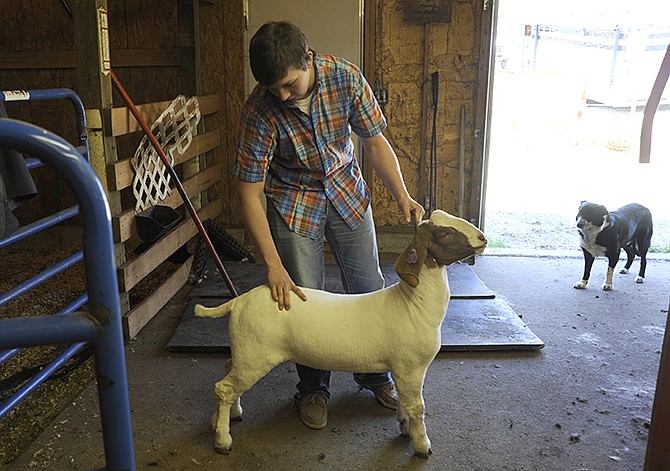If allowed, four-legged Will would follow Trent Kempker around his Eugene farm.
His big brown eyes and floppy ears communicate his eagerness to be social.
"He just wants to be with you," Kempker said.
Kempker spends more than an hour each day with Will and his other goats, which he shows at about 10 contests each year.
"They're pretty chill; they're not really scared of much," he said.
A few weeks ago, Kempker and Will took the grand champion award at a show in Miami, Okla.
This winter, Kempker and Will's predecessor, Toucan, won reserve grand champion in the Lightweight Junior Division at the National Western Livestock Show in Denver, Colo. The win was bittersweet - part of the award to the top two goats from each of three divisions is a sale.
"It was the first time we'd made the sale, that was the goal," Kempker said. "But it's the worst part about showing."
Secretary of the Eugene FFA Chapter and a 10-year member of the Eager Elves 4-H Club, Kempker got involved with goats about four years ago.
"It's a hobby, for now; I'm the only one who really likes it," Kempker said.
His brother Evan and parents Dan and Diana have been supportive and involved with the goat showing, too.
The family's primary interest is cattle. But their living room boasts the buckles, trophies, ribbons and banners from the goat shows.
As Kempker narrows down his search for a college, he is planning to take his goats with him.
"They have a lot of personality; I've had a lot of success with them," Kempker said. "They're pretty different from cattle."
In the beginning, Kempker and his brother called many experts and did a lot of research. By the end of their first show season, they had a good handle on how it works.
The most important element is selection of the animal, Kempker said. And the second factor likely is the right combination of feed.
After that financial investment, Kempker invests his personal time training Will to walk with a lead and to brace so judges can examine his muscles.
He adapted a treadmill to give the goats an indoor workout. Outside, they have a play area and a running track, where Kempker's border collie, Shooter, chases them for several laps every few days.
"I've spent countless numbers of hours in the barn and keeping up with the trends," Kempker said.
Shows may have as many as 400 competitors. The Denver show had 180 goats from 11 states.
With few people working so intently with goats locally, Kempker said the best part about going to the shows is seeing friends with the mutual interest.
"We're best friends and it's a friendly competition," he said.
In addition to seeing good success at recent shows, Kempker is excited to be part of a growing industry, he said.
"I wish I'd gotten into it sooner," he said.

